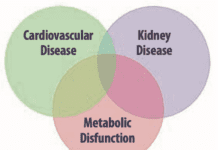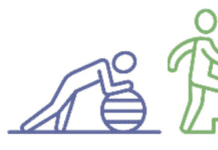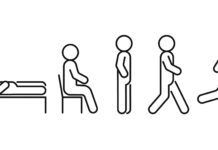H eres more evidence that walking helps boost your brain-but you might have to step it up: In a study of 299 Pittsburgh seniors, those walking at least 72 blocks weekly had signifcantly greater gray-matter volume in subsequent MRI scans.
Kirk Erickson, PhD, of the University of Pittsburgh, and colleagues studied people enrolled in the Cardiovascular Health Study, a long, multistate research project focused on risk factors for heart disease and stroke. Erickson and colleagues did additional research on 299 of the 1,479 Pittsburgh participants, all of whom were cognitively normal at the studys start. Those participants, average age 78, also underwent MRI scans after nine years and were tested for mild cognitive impairment or dementia after 13 years.
Participants were divided into four groups based on weekly walking distance at the studys start. The groups averaged 8, 21, 45 and 156 blocks per week. When scanned nine years later, those in the lower three groups of walking distance did not show signifcant difference in brain volumes, although there was a trend toward greater volume with increased activity. But the group averaging 156 blocks weekly had markedly greater volumes in three gray- matter areas of the brain-the inferior frontal gyrus, the hippocampal formation and the supplementary motor area.
The results, Erickson and colleagues reported in the journal Neurology, suggest that a large amount of physical activity is neces- sary to detect a difference in brain structure over a nine-year followup period. The ninimum weekly walking distance required to detect increased gray-matter volume was 72 blocks. But walking even farther than 72 blocks-the maximum among study partici- pants was 300 blocks-was not associated with still greater gray-matter volume.
I n turn, the greater gray-matter volume ob- served with physical activity was associated with a two-fold reduction in risk of cognitive impairment. At the fnal 13-year followup, 116 participants were found to have some cogni- tive impairment, while the other 183 surviving subjects still had normal cognition.
Overall, correlations between greater walking distance and lower likelihood of being diagnosed with dementia or mild cognitive impairment fell just short of sta- tistical signifcance. But researchers noted, Greater walking distances are associated with greater gray-matter volume in a time period of life in which cortical deterioration and risk for dementia is greatest.
If youre inspired to start a walking regimen for your brains sake, one block is about an eighth of a mile, although block lengths differ by city. So 72 blocks would be about nine miles a week, or roughly a mile and a quarter per day. Neurology, Oct. 19, 2010; abstract at<www.neurology.org/cgi/content/ abstract/75/16/1415 >























